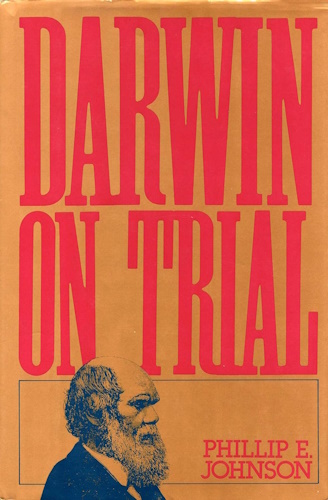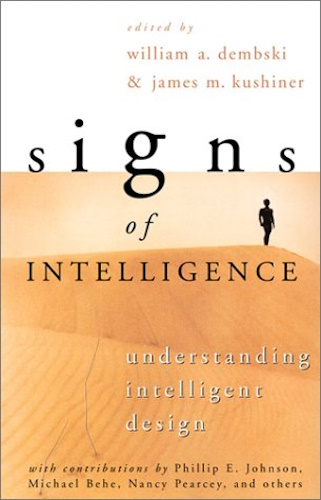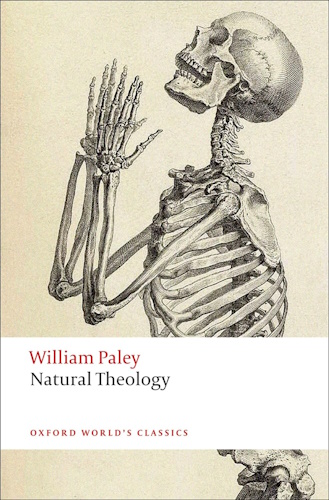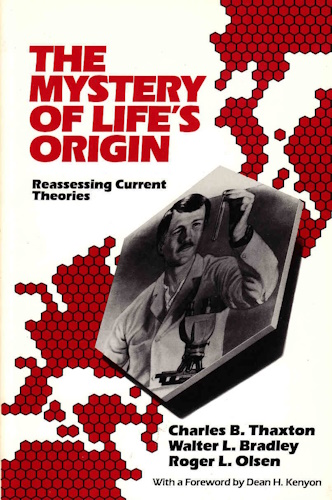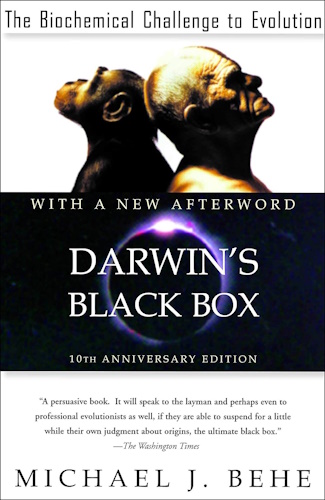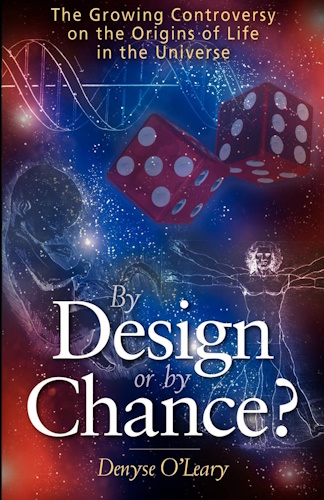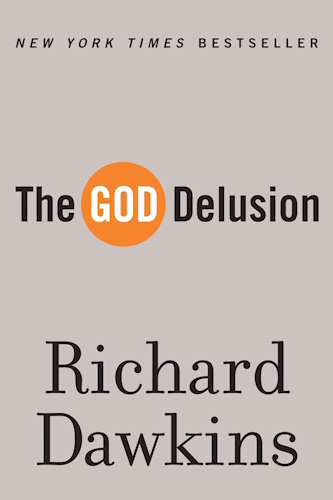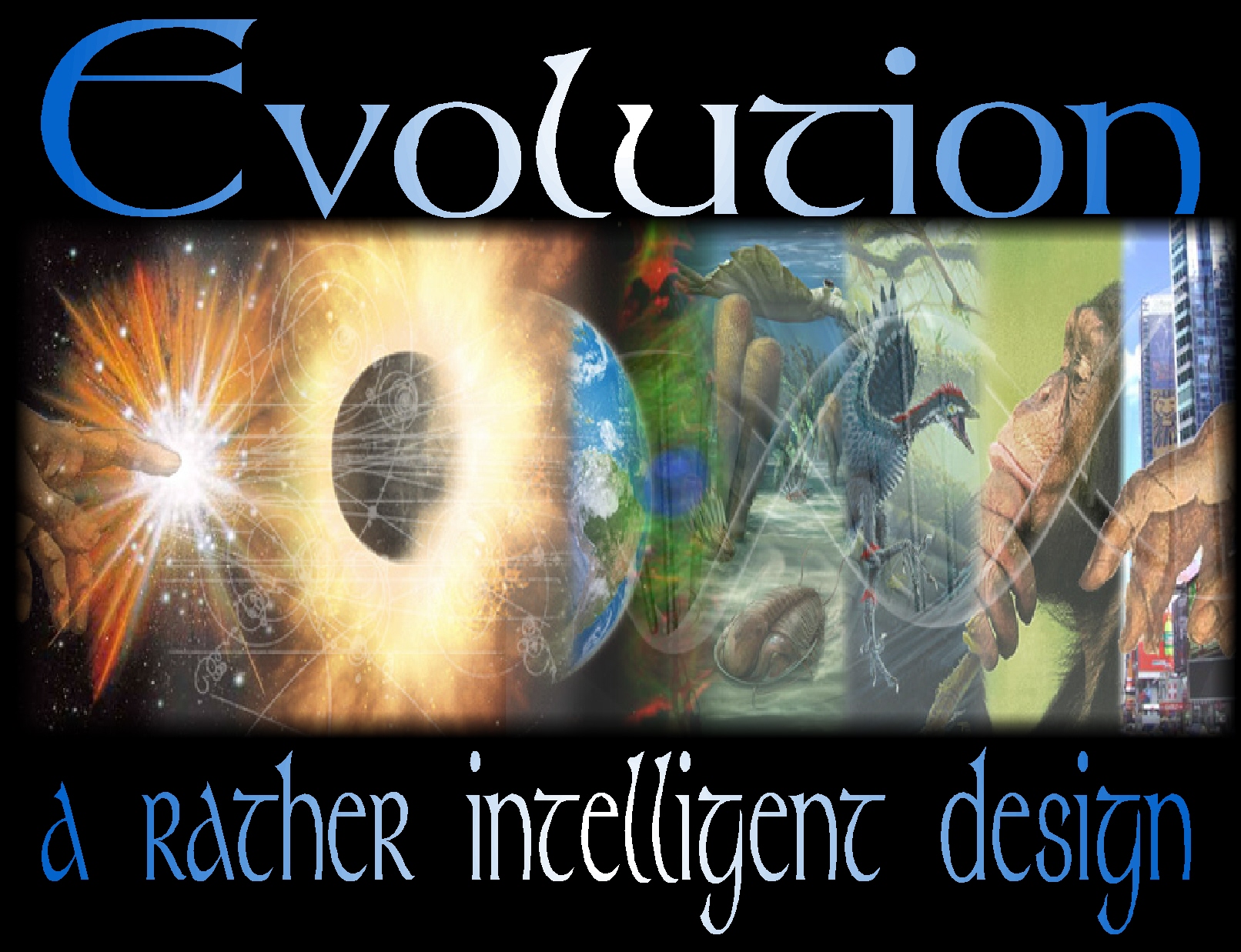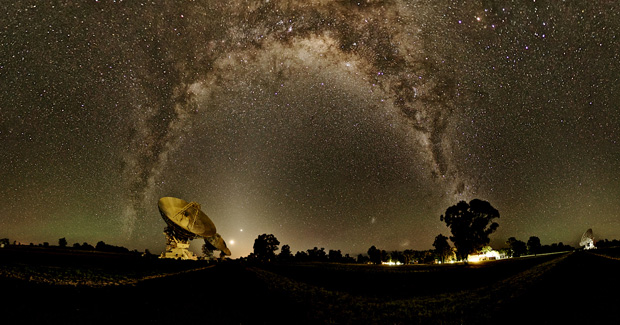![]()
Intelligent Design
a Wikipedia © 2001-2006 adaption
![]()
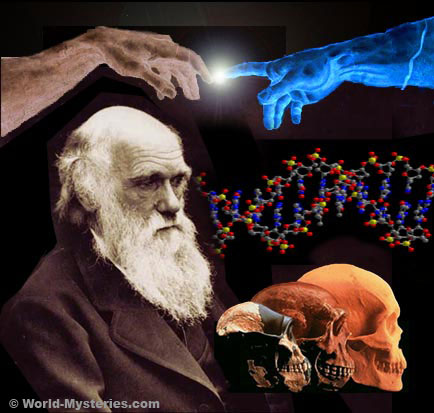
Intelligent Design is the assertion that "certain features of the universe and of living things are best explained by an intelligent cause, not an undirected process such as natural selection." It is a modern form of the traditional teleological argument for the existence of God, modified to avoid specifying the nature or identity of the designer. The idea was developed by a group of United States creationists who reformulated their argument in the creation-evolution controversy to circumvent court rulings that prohibit the teaching of creationism as science. Its primary proponents, all of whom are associated with the U.S.-based Discovery Institute, believe the designer to be the God of Christianity. Advocates of intelligent design argue that it is a scientific theory, and seek to fundamentally redefine science to accept supernatural explanations.
The consensus in the scientific community is that intelligent design is not science. The U.S. National Academy of Sciences has stated that "creationism, intelligent design, and other claims of supernatural intervention in the origin of life or of species are not science because they are not testable by the methods of science." The US National Science Teachers Association and the American Association for the Advancement of Science have termed it pseudoscience. Others in the scientific community have concurred, and some have called it junk science.
"Intelligent design" originated in response to the 1987 United States Supreme Court Edwards v. Aguillard ruling involving separation of church and state. Its first significant published use was in Of Pandas and People, a 1989 textbook intended for high-school biology classes. Several additional books on "intelligent design" were published in the 1990s. By the mid-1990s, intelligent design proponents had begun clustering around the Discovery Institute and more publicly advocating the inclusion of intelligent design in public school curricula. With the Discovery Institute and its Center for Science and Culture serving a central role in planning and funding, the "intelligent design movement" grew increasingly visible in the late 1990s and early 2000s, culminating in the 2005 "Dover trial" which challenged the intended use of intelligent design in public school science classes.
In Kitzmiller v. Dover Area School District, a group of parents of high-school students challenged a public school district requirement for teachers to present intelligent design in biology classes as an alternative "explanation of the origin of life." U.S. District Judge John E. Jones III ruled that intelligent design is not science, that it "cannot uncouple itself from its creationist, and thus religious, antecedents," and that the school district's promotion of it therefore violated the Establishment Clause of the First Amendment to the U.S. Constitution.
Overview
The term "intelligent design" came into use after the U.S. Supreme Court ruled in the 1987 case of Edwards v. Aguillard that to require the teaching of "creation science" alongside evolution was a violation of the Establishment Clause, which prohibits state aid to religion. In the Edwards case, the Supreme Court had also held that "teaching a variety of scientific theories about the origins of humankind to school children might be validly done with the clear secular intent of enhancing the effectiveness of science instruction." In drafts of the creation science textbook Of Pandas and People: The Central Question of Biological Origins, almost all derivatives of the word "creation," such as "creationism," were replaced with the words "intelligent design." The book was published in 1989, followed by a "grass-roots" campaign promoting the use of the book to teach intelligent design in high-school biology classes.
The same Supreme Court ruling prompted the retired legal scholar Phillip E. Johnson, in his 1991 book Darwin on Trial, to advocate redefining science to allow claims of supernatural creation. A group including Michael Behe, Stephen C. Meyer and William Dembski joined Johnson in aiming to overturn the methodological naturalism of the scientific method (which he describes as "materialism") and replace it with "theistic realism" through what they later called the "wedge strategy." Behe contributed to the 1993 revision of Of Pandas and People
, setting out the ideas he later called "irreducible complexity." In 1994 Meyer made contact with the Discovery Institute, and in the following year they obtained funding to set up the Center for Renewal of Science and Culture to promote the intelligent design movement seeking public and political support for teaching "intelligent design" as a creation-based alternative to evolution, particularly in the United States.
Intelligent design is presented as an alternative to natural explanations for the origin and diversity of life. It stands in opposition to conventional biological science, which relies on the scientific method to explain life through observable processes such as mutation and natural selection. The stated purpose of intelligent design is to investigate whether or not existing empirical evidence implies that life on Earth must have been designed by an intelligent agent or agents. William A. Dembski, one of intelligent design's leading proponents, has said that the fundamental claim of intelligent design is that "there are natural systems that cannot be adequately explained in terms of undirected natural forces and that exhibit features which in any other circumstance we would attribute to intelligence." In the leaked Discovery Institute manifesto known as the Wedge Document, however, the supporters of the movement were told:
Proponents of intelligent design look for evidence of what they term "signs of intelligence": physical properties of an object that point to a designer (see: teleological argument). For example, intelligent design proponents argue that an archaeologist who finds a statue made of stone in a field may justifiably conclude that the statue was designed, and may reasonably seek to identify its designer. The archaeologist would not, however, be justified in making the same claim based on an irregularly shaped boulder of the same size. Design proponents argue that living systems show great complexity, from which they infer that some aspects of life have been designed.
Intelligent design proponents say that although evidence pointing to the nature of an "intelligent cause or agent" may not be directly observable, its effects on nature can be detected. Dembski, in Signs of Intelligence: Understanding Intelligent Design, states: "Proponents of intelligent design regard it as a scientific research program that investigates the effects of intelligent causes ... not intelligent causes per se." In his view, one cannot test for the identity of influences exterior to a closed system from within, so questions concerning the identity of a designer fall outside the realm of the concept. In the 20 years since intelligent design was first formulated, no rigorous test that can identify these effects has yet been proposed. No articles supporting intelligent design have been published in peer-reviewed scientific journals, nor has intelligent design been the subject of scientific research or testing.
Origins of the concept
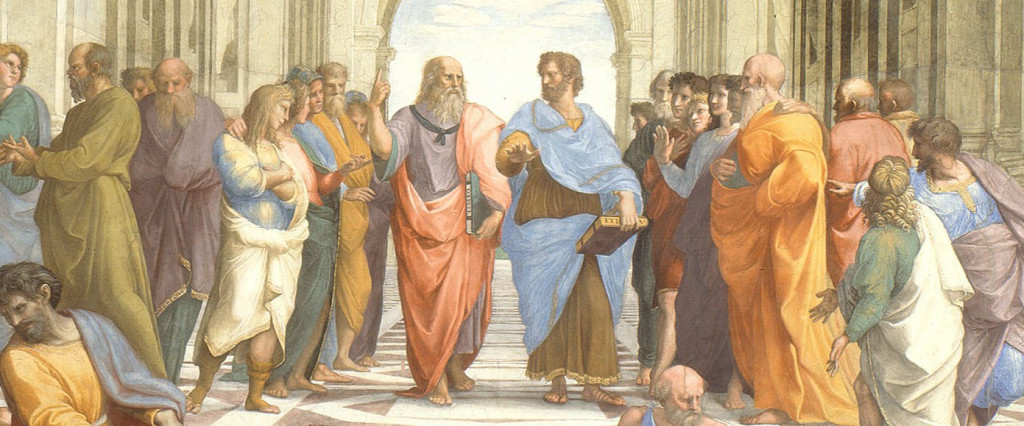
All men, Socrates, who have any degree of right feeling, at the beginning of every enterprise, whether small or great, always call upon God. And we, too, who are going to discourse of the nature of the universe, how created or how existing without creation, if we be not altogether out of our wits, must invoke the aid of Gods and Goddesses and pray that our words may be acceptable to them and consistent with themselves. Let this, then, be our invocation of the Gods, to which I add an exhortation of myself to speak in such manner as will be most intelligible to you, and will most accord with my own intent.
Philosophers have long debated whether the complexity of nature indicates the existence of a purposeful natural or supernatural designer/creator(s). Among the first attested arguments for a designer of the Universe are those recorded in Greek philosophy. In the 4th century BC, Plato posited a "demiurge" who was good and wise as the creator and first cause of the cosmos in his Timaeus. Aristotle also developed the idea of a creator-designer of the cosmos, often called the "Unmoved Mover," in his work Metaphysics. In De Natura Deorum, or "On the Nature of the Gods" (45 BC), Cicero stated that "the divine power is to be found in a principle of reason which pervades the whole of nature.
The use of this line of reasoning as applied to a supernatural designer has come to be known as the teleological argument for the existence of God.

The most notable forms of this argument were expressed in the 13th century by Thomas Aquinas in his Summa Theologiae, design being the fifth of Aquinas' five proofs for God's existence, and by William Paley in his book Natural Theology (1802). Paley used the watchmaker analogy, which is still used in intelligent design arguments. In the early 19th century, such arguments led to the development of what was called natural theology, the study of nature as a means to understand "the mind of God." This movement fueled the passion for collecting fossils and other biological specimens, which ultimately led to Darwin's theory of the origin of species. Similar reasoning postulating a divine designer is embraced today by many believers in theistic evolution, who consider modern science and the theory of evolution to be fully compatible with the concept of a supernatural designer.
Intelligent design in the late 20th and early 21st century can be seen as a modern development of natural theology that seeks to change the basis of science and undermine evolutionary theory. As evolutionary theory has expanded to explain more phenomena, the examples that are held up as evidence of design have changed. But the essential argument remains the same: complex systems imply a designer. Examples offered in the past included the eye (optical system) and the feathered wing; current examples are mostly biochemical: protein functions, blood clotting, and bacterial flagella.
Barbara Forrest describes the intelligent design movement as beginning in 1984 when Jon A. Buell's religious organization the Foundation for Thought and Ethics (FTE) published The Mystery of LIfe's Origin: Reassessing Current Theories by creationist chemist Charles B. Thaxton.
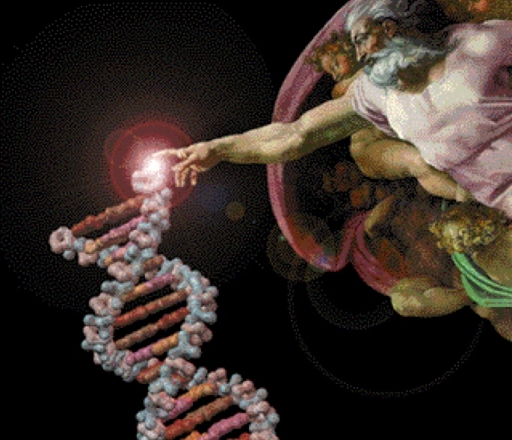
In March 1986 Stephen C. Meyer's review described it as using information theory to suggest that messages transmitted by DNA in the cell show "specified complexity" specified by intelligence, and must have originated with an intelligent agent. In November of that year Thaxton described his reasoning as a more sophisticated form of Paley's argument from design. At the Sources of Information Content in DNA conference in 1988 he said that his intelligent cause view was compatible with both metaphysical naturalism and supernaturalism, and the term intelligent design came up.
Intelligent design deliberately does not try to identify or name the specific agent of creation—it merely states that one (or more) must exist. Although intelligent design itself does not name the designer, the leaders of the intelligent design movement have said that the designer is the Christian God. Whether this lack of specificity about the designer's identity in public discussions is a genuine feature of the concept, or just a posture taken to avoid alienating those who would separate religion from the teaching of science, has been a matter of great debate between supporters and critics of intelligent design. The Kitzmiller v. Dover Area School District court ruling held the latter to be the case.
Origins of the term
Prior to the publication of the book Of Pandas and People in 1989, the words "intelligent design" had been used on several occasions as a descriptive phrase in contexts that are unrelated to the modern use of the term. The phrase "intelligent design" can be found in an 1847 issue of Scientific American, in an 1850 book by Patrick Edward Dove, and even in an 1861 letter of Charles Darwin. The phrase was used in an address to the 1873 annual meeting of the British Association for the Advancement of Science by Paleyite botanist George James Allman:
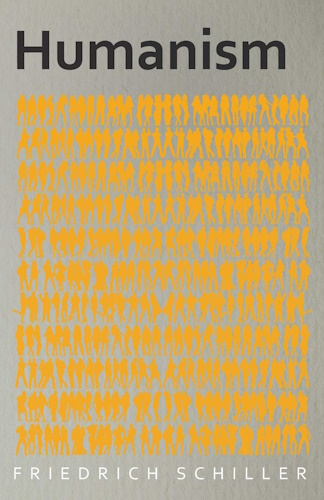
The phrase can be found again in Humanism
, a 1903 book by one of the founders of classical pragmatism, F.C.S. Schiller: "It will not be possible to rule out the supposition that the process of evolution may be guided by an intelligent design." A derivative of the phrase appears in the Macmillan Encyclopedia of Philosophy (1967) in the article titled, Teleological argument for the existence of God: "Stated most succinctly, the argument runs: The world exhibits teleological order (design, adaptation). Therefore, it was produced by an intelligent designer." The phrases "intelligent design" and "intelligently designed" were used in a 1979 book Chance or Design? On the Origin of the Universe
by James Horigan and the phrase "intelligent design" was used in a 1982 speech by Sir Fred Hoyle in his promotion of panspermia.
The modern use of the words "intelligent design," as a term intended to describe a field of inquiry, began after the Supreme Court of the United States, in the case of Edwards v. Aguillard (1987), ruled that creationism is unconstitutional in public school science curricula. A Discovery Institute report says that Charles Thaxton, editor of Of Pandas and People, had picked the phrase up from a NASA scientist, and thought "That's just what I need, it's a good engineering term." In drafts of the book over one hundred uses of the root word "creation," such as "creationism" and "creation science," were changed, almost without exception, to intelligent design, while "creationists" was changed to "design proponents" or, in one instance, "cdesign proponentsists." In June 1988 Thaxton held a conference titled Sources of Information Content in DNA in Tacoma, Washington, and in December decided to use the label "intelligent design" for his new creationist movement. Stephen C. Meyer was at the conference, and later recalled that "the term came up." The book Of Pandas and People was published in 1989, and is considered to be the first intelligent design book, as well as the first place where the phrase "intelligent design" appeared in its present use.
Integral concepts
Irreducible complexity
The term "irreducible complexity" was introduced by biochemist Michael Behe, who defines it as "a single system which is composed of several well-matched interacting parts that contribute to the basic function, wherein the removal of any one of the parts causes the system to effectively cease functioning."
Behe uses the analogy of a mousetrap to illustrate this concept. A mousetrap consists of several interacting pieces—the base, the catch, the spring and the hammer—all of which must be in place for the mousetrap to work. Removal of any one piece destroys the function of the mousetrap. Intelligent design advocates assert that natural selection could not create irreducibly complex systems, because the selectable function is present only when all parts are assembled. Behe argued that irreducibly complex biological mechanisms include the bacterial flagellum of E. coli, the blood clotting cascade, cilia, and the adaptive immune system.
Critics point out that the irreducible complexity argument assumes that the necessary parts of a system have always been necessary and therefore could not have been added sequentially. They argue that something which is at first merely advantageous can later become necessary as other components change. Furthermore, they argue, evolution often proceeds by altering preexisting parts or by removing them from a system, rather than by adding them. This is sometimes called the "scaffolding objection" by an analogy with scaffolding, which can support an "irreducibly complex" building until it is complete and able to stand on its own.
Behe has acknowledged using "sloppy prose," and that his "argument against Darwinism does not add up to a logical proof." Irreducible complexity has remained a popular argument among advocates of intelligent design; in the Dover trial, the court held that "Professor Behe's claim for irreducible complexity has been refuted in peer-reviewed research papers and has been rejected by the scientific community at large."
Specified complexity
In 1986 the creationist chemist Charles Thaxton used the term "specified complexity" from information theory when claiming that messages transmitted by DNA in the cell were specified by intelligence, and must have originated with an intelligent agent.
The intelligent design concept of "specified complexity" was developed in the 1990s by mathematician, philosopher, and theologian William Dembski. Dembski states that when something exhibits specified complexity (i.e., is both complex and "specified," simultaneously), one can infer that it was produced by an intelligent cause (i.e., that it was designed) rather than being the result of natural processes. He provides the following examples: "A single letter of the alphabet is specified without being complex. A long sentence of random letters is complex without being specified. A Shakespearean sonnet is both complex and specified."
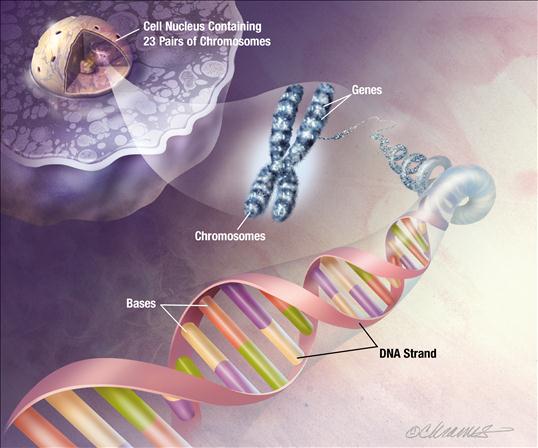
He states that details of living things can be similarly characterized, especially the "patterns" of molecular sequences in functional biological molecules such as DNA.
Dembski defines complex specified information (CSI) as anything with a less than 1 in 10150 chance of occurring by (natural) chance. Critics say that this renders the argument a tautology: complex specified information cannot occur naturally because Dembski has defined it thus, so the real question becomes whether or not CSI actually exists in nature.
The conceptual soundness of Dembski's specified complexity/CSI argument has been widely discredited by the scientific and mathematical communities. Specified complexity has yet to be shown to have wide applications in other fields as Dembski asserts. John Wilkins and Wesley Elsberry characterize Dembski's "explanatory filter" as eliminative, because it eliminates explanations sequentially: first regularity, then chance, finally defaulting to design. They argue that this procedure is flawed as a model for scientific inference because the asymmetric way it treats the different possible explanations renders it prone to making false conclusions.
Richard Dawkins, another critic of intelligent design, argues in The God Delusion that allowing for an intelligent designer to account for unlikely complexity only postpones the problem, as such a designer would need to be at least as complex. Other scientists have argued that evolution through selection is better able to explain the observed complexity, as is evident from the use of selective evolution to design certain electronic, aeronautic and automotive systems which are considered problems too complex for human "intelligent designers."
Fine-tuned Universe
Intelligent design proponents also raise occasional arguments outside biology, most notably an argument based on the concept of the fine-tuning of universal constants that make matter and life possible and which are argued not to be solely attributable to chance. These include the values of fundamental physical constants, the relative strength of nuclear forces, electromagnetism, and gravity between fundamental particles, as well as the ratios of masses of such particles. Intelligent design proponent and Center for Science and Culture fellow Guillermo Gonzalez argues that if any of these values were even slightly different, the universe would be dramatically different, making it impossible for many chemical elements and features of the Universe, such as galaxies, to form. Thus, proponents argue, an intelligent designer of life was needed to ensure that the requisite features were present to achieve that particular outcome.
Scientists almost unanimously have responded that this argument cannot be tested and is not scientifically productive. Some scientists argue that even when taken as mere speculation, these arguments are poorly supported by existing evidence. Victor J. Stenger and other critics say both intelligent design and the weak form of the anthropic principle are essentially a tautology; in his view, these arguments amount to the claim that life is able to exist because the Universe is able to support life. The claim of the improbability of a life-supporting universe has also been criticized as an argument by lack of imagination for assuming no other forms of life are possible. Life as we know it might not exist if things were different, but a different sort of life might exist in its place. A number of critics also suggest that many of the stated variables appear to be interconnected and that calculations made by mathematicians and physicists suggest that the emergence of a universe similar to ours is quite probable.
Proponent Granville Sewell has stated that the evolution of complex forms of life represents a decrease of entropy, thereby violating the second law of thermodynamics and supporting intelligent design. This, however, is a misapplication of thermodynamic principles. The second law applies to closed systems only. If this argument were true, living things could not be born and grow, as this also would be a decrease in entropy. However, like evolution, the growth of living things does not violate the second law of thermodynamics, because living things are not closed systems-- they have external energy sources (e.g. food, oxygen, sunlight) whose production requires an offsetting net increase in entropy.
Intelligent designer
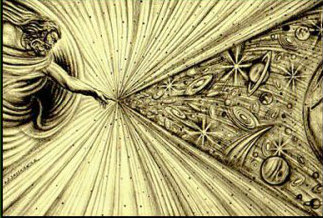
Intelligent design arguments are formulated in secular terms and intentionally avoid identifying the intelligent agent (or agents) they posit. Although they do not state that God is the designer, the designer is often implicitly hypothesized to have intervened in a way that only a god could intervene. Dembski, in The Design Inference, speculates that an alien culture could fulfill these requirements. The authoritative description of intelligent design, however, explicitly states that the Universe displays features of having been designed. Acknowledging the paradox, Dembski concludes that "no intelligent agent who is strictly physical could have presided over the origin of the universe or the origin of life." The leading proponents have made statements to their supporters that they believe the designer to be the Christian God, to the exclusion of all other religions.
Beyond the debate over whether intelligent design is scientific, a number of critics argue that existing evidence makes the design hypothesis appear unlikely, irrespective of its status in the world of science. For example, Jerry Coyne, of the University of Chicago, asks why a designer would "give us a pathway for making vitamin C, but then destroy it by disabling one of its enzymes" and why he or she would not "stock oceanic islands with reptiles, mammals, amphibians, and freshwater fish, despite the suitability of such islands for these species." Coyne also points to the fact that "the flora and fauna on those islands resemble that of the nearest mainland, even when the environments are very different" as evidence that species were not placed there by a designer. Previously, in Darwin's Black Box: The Biochemical Challenge to Evolution, Behe had argued that we are simply incapable of understanding the designer's motives, so such questions cannot be answered definitively. Odd designs could, for example, "have been placed there by the designer ... for artistic reasons, to show off, for some as-yet undetectable practical purpose, or for some unguessable reason." Coyne responds that in light of the evidence, "either life resulted not from intelligent design, but from evolution; or the intelligent designer is a cosmic prankster who designed everything to make it look as though it had evolved."
Asserting the need for a designer of complexity also raises the question "What designed the designer? Intelligent design proponents say that the question is irrelevant to or outside the scope of intelligent design. Richard Wein counters that the unanswered questions an explanation creates "must be balanced against the improvements in our understanding which the explanation provides. Invoking an unexplained being to explain the origin of other beings (ourselves) is little more than question-begging. The new question raised by the explanation is as problematic as the question which the explanation purports to answer." Richard Dawkins sees the assertion that the designer does not need to be explained, not as a contribution to knowledge, but as a thought-terminating cliché. In the absence of observable, measurable evidence, the very question "What designed the designer?" leads to an infinite regression from which intelligent design proponents can only escape by resorting to religious creationism or logical contradiction.
Movement
The intelligent design movement is a direct outgrowth of the creationism of the 1980s. The scientific and academic communities, along with a U.S. federal court, view intelligent design as either a form of creationism or as a direct descendant that is closely intertwined with traditional creationism; and several authors explicitly refer to it as "intelligent design creationism."
The movement is headquartered in the Center for Science and Culture (CSC), established in 1996 as the creationist wing of the Discovery Institute to promote a religious agenda calling for broad social, academic and political changes. The Discovery Institute's intelligent design campaigns have been staged primarily in the United States, although efforts have been made in other countries to promote intelligent design. Leaders of the movement say intelligent design exposes the limitations of scientific orthodoxy and of the secular philosophy of naturalism. Intelligent design proponents allege that science should not be limited to naturalism and should not demand the adoption of a naturalistic philosophy that dismisses out-of-hand any explanation which contains a supernatural cause. The overall goal of the movement is to "defeat [the] materialist world view" represented by the theory of evolution in favor of "a science consonant with Christian and theistic convictions."
Phillip E. Johnson stated that the goal of intelligent design is to cast creationism as a scientific concept. All leading intelligent design proponents are fellows or staff of the Discovery Institute and its Center for Science and Culture. Nearly all intelligent design concepts and the associated movement are the products of the Discovery Institute, which guides the movement and follows its wedge strategy while conducting its Teach the Controversy campaign and their other related programs.
Leading intelligent design proponents have made conflicting statements regarding intelligent design. In statements directed at the general public, they say intelligent design is not religious; when addressing conservative Christian supporters, they state that intelligent design has its foundation in the Bible. Recognizing the need for support, the institute affirms its Christian, evangelistic orientation: "Alongside a focus on influential opinion-makers, we also seek to build up a popular base of support among our natural constituency, namely, Christians. We will do this primarily through apologetics seminars. We intend these to encourage and equip believers with new scientific evidences that support the faith, as well as to 'popularize' our ideas in the broader culture."
Barbara Forrest, an expert who has written extensively on the movement, describes this as being due to the Discovery Institute's obfuscating its agenda as a matter of policy. She has written that the movement's "activities betray an aggressive, systematic agenda for promoting not only intelligent design creationism, but the religious world-view that undergirds it."
Religion and leading proponents
Although arguments for intelligent design are formulated in secular terms and intentionally avoid positing the identity of the designer, the majority of principal intelligent design advocates are publicly religious Christians who have stated that in their view the designer proposed in intelligent design is the Christian conception of God. Stuart Burgess, Phillip E. Johnson, William Dembski, and Stephen C. Meyer are evangelical Protestants, and Michael Behe is a Roman Catholic, while Jonathan Wells is a member of the Unification Church. Phillip E. Johnson has stated that cultivating ambiguity by employing secular language in arguments that are carefully crafted to avoid overtones of theistic creationism is a necessary first step for ultimately reintroducing the Christian concept of God as the designer. Johnson explicitly calls for intelligent design proponents to obfuscate their religious motivations so as to avoid having intelligent design identified "as just another way of packaging the Christian evangelical message." Johnson emphasizes that "the first thing that has to be done is to get the Bible out of the discussion"; "after we have separated materialist prejudice from scientific fact [...] only then can 'biblical issues' be discussed."
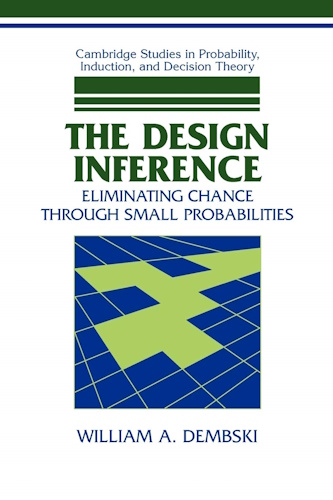
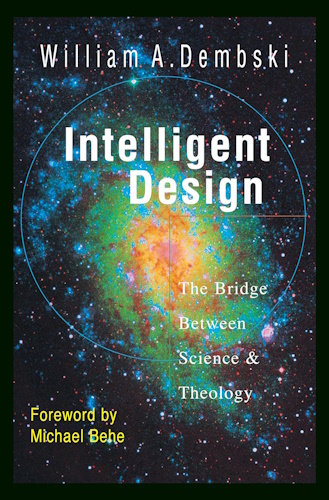
The strategy of deliberately disguising the religious intent of intelligent design has been described by William Dembski in The Design Inference
. In this work Dembski lists a god or an "alien life force" as two possible options for the identity of the designer; however, in his book Intelligent Design: The Bridge Between Science & Theology
, Dembski states that "Christ is indispensable to any scientific theory, even if its practitioners don't have a clue about him. The pragmatics of a scientific theory can, to be sure, be pursued without recourse to Christ. But the conceptual soundness of the theory can in the end only be located in Christ." Dembski also stated, "ID is part of God's general revelation [...] Not only does intelligent design rid us of this ideology (materialism), which suffocates the human spirit, but, in my personal experience, I've found that it opens the path for people to come to Christ." Both Johnson and Dembski cite the Bible's Gospel of John as the foundation of intelligent design.
Barbara Forrest contends such statements reveal that leading proponents see intelligent design as essentially religious in nature, not merely a scientific concept that has implications with which their personal religious beliefs happen to coincide. She writes that the leading proponents of intelligent design are closely allied with the ultra-conservative Christian Reconstructionism movement. She lists connections of (current and former) Discovery Institute Fellows Phillip Johnson, Charles Thaxton, Michael Behe, Richard Weikart, Jonathan Wells and Francis Beckwith to leading Christian Reconstructionist organizations, and the extent of the funding provided the Institute by Howard Ahmanson Jr., a leading figure in the Reconstructionist movement.
Polls
Several surveys were conducted prior to the December 2005 decision in Kitzmiller v. Dover, which sought to determine the level of support for intelligent design among certain groups. According to a 2005 Harris poll, 10% of adults in the United States viewed human beings as "so complex that they required a powerful force or intelligent being to help create them."
Although Zogby polls commissioned by the Discovery Institute show more support, these polls suffer from considerable flaws, such as having a very low response rate (248 out of 16,000), being conducted on behalf of an organization with an expressed interest in the outcome of the poll, and containing leading questions.
A May 2005 survey of nearly 1500 physicians in the United States conducted by the Louis Finkelstein Institute and HCD Research showed that 63% of the physicians agreed more with evolution than with intelligent design.
Creating and teaching the controversy
A key strategy of the intelligent design movement is convincing the general public that there is a debate among scientists about whether life evolved. The intelligent design movement creates this controversy in order to convince the public, politicians and cultural leaders that schools should "Teach the Controversy." But in fact, there is no such controversy in the scientific community; the scientific consensus that life evolved. Intelligent design is widely viewed as a stalking horse for its proponents' campaign against what they say is the materialist foundation of science, which they argue leaves no room for the possibility of God.
Advocates of intelligent design seek to keep God and the Bible out of the discussion, and present intelligent design in the language of science as a scientific hypothesis. However, among the general public in the United States the major concern is whether or not conventional evolutionary biology is compatible with belief in God and in the Bible, and concerns about what is taught in schools. The public controversy was given widespread media coverage in the United States, particularly during the Kitzmiller v. Dover trial in 2005. Prominent coverage of the public controversy was given on the front page of Time magazine with a story on Evolution Wars, on 15 August, 2005. The cover poses the question: "Does God have a place in science class? The eventual decision of the court ruled that intelligent design was a religious and creationist position, and answered the question posed by Time magazine with a firm negative, finding that God and intelligent design were both distinct from the material that should be covered in a science class.
From the standpoint of public-school educational policy, the intelligent design controversy centers on three issues:
- Can intelligent design be defined as science?
- If so, does the evidence support it and related explanations of the history of life on Earth?
- If the answer to either question is negative, is the teaching of such explanations appropriate and legal in public education, specifically in science classes?
Empirical science uses the scientific method to create a posteriori knowledge based on observation and repeated testing of hypotheses and theories. Intelligent design proponents seek to change this fundamental basis of science by eliminating "methodological naturalism" from science and replacing it with what the leader of the intelligent design movement, Phillip E. Johnson, calls "theistic realism." Some have called this approach "methodological supernaturalism," which means belief in a transcendent, nonnatural dimension of reality inhabited by a transcendent, nonnatural deity. Intelligent design proponents argue that naturalistic explanations fail to explain certain phenomena and that supernatural explanations provide a very simple and intuitive explanation for the origins of life and the universe. Proponents say that evidence exists in the forms of irreducible complexity and specified complexity that cannot be explained by natural processes.
Supporters also hold that religious neutrality requires the teaching of both evolution and intelligent design in schools, saying that teaching only evolution unfairly discriminates against those holding creationist beliefs. Teaching both, they argue, allows for the possibility of religious belief, without causing the state to actually promote such beliefs. Many intelligent design followers believe that "Scientism" is itself a religion that promotes secularism and materialism in an attempt to erase theism from public life, and they view their work in the promotion of intelligent design as a way to return religion to a central role in education and other public spheres. Some allege that this larger debate is often the subtext for arguments made over intelligent design, though others note that intelligent design serves as an effective proxy for the religious beliefs of prominent intelligent design proponents in their efforts to advance their religious point of view within society.
According to critics, intelligent design has not presented a credible scientific case and is an attempt to teach religion in public schools, which the United States Constitution forbids under the Establishment Clause. They allege that intelligent design has substituted public support for scientific research. Some critics have said that if one were to take the proponents of "equal time for all theories" at their word, there would be no logical limit to the number of potential "theories" to be taught in the public school system, including intelligent design parodies such as the Flying Spaghetti Monster "theory." There are innumerable mutually incompatible supernatural explanations for complexity, and intelligent design does not provide a mechanism for discriminating among them. A fundamental problem of acceptance of intelligent design as science is that intelligent design claims cannot be tested. Philosopher of biology Elliott Sober states that intelligent design is not falsifiable, because "[d]efenders of ID always have a way out" as they can push the influence of the purported designer to an arbitrarily early time that predates the period for which scientists have a "mindless physical" explanation for, and that "[f]or a proposition to be falsifiable, it is not enough that it be inconsistent with a possible state of affairs; it must also be inconsistent with a possible observation." He concludes that to be a scientific hypothesis ID must "have observational consequences that differ from those of a theory with which it competes. Indeed, intelligent design proponent Michael Behe concedes "You can't prove intelligent design by experiment."
Critics have asserted that intelligent design proponents cannot legitimately infer that an intelligent designer is behind the part of the process that is not understood scientifically, since they have not shown that anything supernatural has occurred. The inference that an intelligent designer created life on Earth, which advocate William Dembski has said could alternately be an "alien" life force, has been compared to the a priori claim that aliens helped the ancient Egyptians build the pyramids. In both cases, the effect of this outside intelligence is not repeatable, observable or falsifiable, and it violates the principle of parsimony. From a strictly empirical standpoint, one may list what is known about Egyptian construction techniques, but one must admit ignorance about exactly how the Egyptians built the pyramids.
Supporters of intelligent design have also reached out to other faith groups with similar accounts of creation with the hope that the broader coalition will have greater influence in supporting science education that does not contradict their religious views. Many religious bodies have responded by expressing support for evolution. They state that their religious faith is fully compatible with science, which is limited to dealing only with the natural world—a position described by the term theistic evolution. As well as pointing out that intelligent design is not science, they also reject it for various philosophical and theological reasons. The arguments of intelligent design have been directly challenged by the over 10,000 clergy who signed the Clergy Letter Project. Prominent scientists who strongly express religious faith, such as the astronomer George Coyne and the biologist Ken Miller, have been at the forefront of opposition to intelligent design. While creationist organizations have welcomed intelligent design's support against naturalism, they have also been critical of its refusal to identify the designer, and have pointed to previous failures of the same argument.
Defining science
The scientific method is a body of techniques for investigating phenomena and acquiring new knowledge of the natural world without assuming the existence or nonexistence of the supernatural, an approach sometimes called methodological naturalism. Intelligent design proponents believe that this can be equated to materialist metaphysical naturalism, and have often said that not only is their own position scientific, but it is even more scientific than evolution, and that they want a redefinition of science as a revived natural theology or natural philosophy to allow "non-naturalistic theories such as intelligent design." This presents a demarcation problem, which in the philosophy of science is about how and where to draw the lines around science. For a theory to qualify as scientific, it is expected to be:
- Consistent
- Parsimonious (sparing in its proposed entities or explanations, see Occam's Razor)
- Useful (describes and explains observed phenomena, and can be used predictively)
- Empirically testable and falsifiable (see Falsifiability)
- Based on multiple observations, often in the form of controlled, repeated experiments
- Correctable and dynamic (modified in the light of observations that do not support it)
- Progressive (refines previous theories)
- Provisional or tentative (is open to experimental checking, and does not assert certainty)
For any theory, hypothesis or conjecture to be considered scientific, it must meet most, and ideally all, of these criteria. The fewer criteria are met, the less scientific it is; and if it meets only a few or none at all, then it cannot be treated as scientific in any meaningful sense of the word. Typical objections to defining intelligent design as science are that it lacks consistency, violates the principle of parsimony, is not scientifically useful, is not falsifiable, is not empirically testable, and is not correctable, dynamic, provisional or progressive.
Critics also say that the intelligent design doctrine does not meet the Daubert Standard, the criteria for scientific evidence mandated by the Supreme Court. The Daubert Standard governs which evidence can be considered scientific in United States federal courts and most state courts. Its four criteria are:
- The theoretical underpinnings of the methods must yield testable predictions by means of which the theory could be falsified.
- The methods should preferably be published in a peer-reviewed journal.
- There should be a known rate of error that can be used in evaluating the results.
- The methods should be generally accepted within the relevant scientific community.
In Kitzmiller v. Dover Area School District, using these criteria and others mentioned above, Judge Jones Kitzmiller v. Dover Area School District/6:Curriculum, Conclusion "we have addressed the seminal question of whether ID is science. We have concluded that it is not, and moreover that ID cannot uncouple itself from its creationist, and thus religious, antecedents."
Peer review
The failure to follow the procedures of scientific discourse and the failure to submit work to the scientific community that withstands scrutiny have weighed against intelligent design being considered as valid science. To date, the intelligent design movement has yet to have an article published in a peer-reviewed scientific journal.
Intelligent design, by appealing to a supernatural agent, directly conflicts with the principles of science, which limit its inquiries to empirical, observable and ultimately testable data and which require explanations to be based on empirical evidence. Dembski, Behe and other intelligent design proponents say bias by the scientific community is to blame for the failure of their research to be published. Intelligent design proponents believe that their writings are rejected for not conforming to purely naturalistic, non-supernatural mechanisms rather than because their research is not up to "journal standards," and that the merit of their articles is overlooked. Some scientists describe this claim as a conspiracy theory. Michael Shermer has rebutted the claim, noting “Anyone who thinks that scientists do not question Darwinism has never been to an evolutionary conference.” He noted that scientists such as Joan Roughgarden and Lynn Margulis have challenged certain Darwinist theories and offered explanations of their own and despite this they “have not been persecuted, shunned, fired or even expelled. Why? Because they are doing science, not religion.” The issue that supernatural explanations do not conform to the scientific method became a sticking point for intelligent design proponents in the 1990s, and is addressed in the wedge strategy as an aspect of science that must be challenged before intelligent design can be accepted by the broader scientific community.
The debate over whether intelligent design produces new research, as any scientific field must, and has legitimately attempted to publish this research, is extremely heated. Both critics and advocates point to numerous examples to make their case. For instance, the Templeton Foundation, a former funder of the Discovery Institute and a major supporter of projects seeking to reconcile science and religion, says that it asked intelligent design proponents to submit proposals for actual research, but none were ever submitted. Charles L. Harper Jr., foundation vice-president, said: "From the point of view of rigor and intellectual seriousness, the intelligent design people don't come out very well in our world of scientific review."
The only article published in a peer-reviewed scientific journal that made a case for intelligent design was quickly withdrawn by the publisher for having circumvented the journal's peer-review standards. Written by the Discovery Institute's Center for Science & Culture Director Stephen C. Meyer, it appeared in the peer-reviewed journal Proceedings of the Biological Society of Washington in August 2004. The article was a literature review, which means that it did not present any new research, but rather culled quotations and claims from other papers to argue that the Cambrian explosion could not have happened by natural processes. The choice of venue for this article was also considered problematic, because it was so outside the normal subject matter (see Sternberg peer review controversy). Dembski has written that "perhaps the best reason [to be skeptical of his ideas] is that intelligent design has yet to establish itself as a thriving scientific research program." In a 2001 interview, Dembski said that he stopped submitting to peer-reviewed journals because of their slow time-to-print and that he makes more money from publishing books.
In the Dover trial, the judge found that intelligent design features no scientific research or testing. There, intelligent design proponents cited just one paper, on simulation modeling of evolution by Behe and Snoke, which mentioned neither irreducible complexity nor intelligent design and which Behe admitted did not rule out known evolutionary mechanisms. In sworn testimony, however, Behe said: "There are no peer reviewed articles by anyone advocating for intelligent design supported by pertinent experiments or calculations which provide detailed rigorous accounts of how intelligent design of any biological system occurred." As summarized by the judge, Behe conceded that there are no peer-reviewed articles supporting his claims of intelligent design or irreducible complexity. In his ruling, the judge wrote: "A final indicator of how ID has failed to demonstrate scientific warrant is the complete absence of peer-reviewed publications supporting the theory."
Despite this, the Discovery Institute continues to insist that a number of intelligent design articles have been published in peer-reviewed journals, including in its list the two articles mentioned above. Critics, largely members of the scientific community, reject this claim, pointing out that no established scientific journal has yet published an intelligent design article. Instead, intelligent design proponents have set up their own journals with "peer review" which lack impartiality and rigor, consisting entirely of intelligent design supporters.
Intelligence as an observable quality
The phrase intelligent design makes use of an assumption of the quality of an observable intelligence, a concept that has no scientific consensus definition. William Dembski, for example, has written that "Intelligence leaves behind a characteristic signature." The characteristics of intelligence are assumed by intelligent design proponents to be observable without specifying what the criteria for the measurement of intelligence should be. Dembski, instead, asserts that "in special sciences ranging from forensics to archaeology to SETI (the Search for Extraterrestrial Intelligence), appeal to a designing intelligence is indispensable." How this appeal is made and what this implies as to the definition of intelligence are topics left largely unaddressed. Seth Shostak, a researcher with the SETI Institute, refuted Dembski's comparison of SETI and intelligent design, saying that intelligent design advocates base their inference of design on complexity—the argument being that some biological systems are too complex to have been made by natural processes—while SETI researchers are looking primarily for artificiality.
Critics say that the design detection methods proposed by intelligent design proponents are radically different from conventional design detection, undermining the key elements that make it possible as legitimate science. Intelligent design proponents, they say, are proposing both searching for a designer without knowing anything about that designer's abilities, parameters, or intentions (which scientists do know when searching for the results of human intelligence), as well as denying the very distinction between natural/artificial design that allows scientists to compare complex designed artifacts against the background of the sorts of complexity found in nature.
As a means of criticism, certain skeptics have pointed to a challenge of intelligent design derived from the study of artificial intelligence. The criticism is a counter to intelligent design claims about what makes a design intelligent, specifically that "no preprogrammed device can be truly intelligent, that intelligence is irreducible to natural processes." This claim is similar in type to an assumption of Cartesian dualism that posits a strict separation between "mind" and the material Universe. However, in studies of artificial intelligence, while there is an implicit assumption that supposed "intelligence" or creativity of a computer program is determined by the capabilities given to it by the computer programmer, artificial intelligence need not be bound to an inflexible system of rules. Rather, if a computer program can access randomness as a function, this effectively allows for a flexible, creative, and adaptive intelligence. Evolutionary algorithms, a subfield of machine learning (itself a subfield of artificial intelligence), have been used to mathematically demonstrate that randomness and selection can be used to "evolve" complex, highly adapted structures that are not explicitly designed by a programmer. Evolutionary algorithms use the Darwinian metaphor of random mutation, selection and the survival of the fittest to solve diverse mathematical and scientific problems that are usually not solvable using conventional methods. Intelligence derived from randomness is essentially indistinguishable from the "innate" intelligence associated with biological organisms, and poses a challenge to the intelligent design conception that intelligence itself necessarily requires a designer. Cognitive science continues to investigate the nature of intelligence along these lines of inquiry. The intelligent design community, for the most part, relies on the assumption that intelligence is readily apparent as a fundamental and basic property of complex systems.
Arguments from ignorance
Eugenie Scott, along with Glenn Branch and other critics, has argued that many points raised by intelligent design proponents are arguments from ignorance. In the argument from ignorance, a lack of evidence for one view is erroneously argued to constitute proof of the correctness of another view. Scott and Branch say that intelligent design is an argument from ignorance because it relies on a lack of knowledge for its conclusion: lacking a natural explanation for certain specific aspects of evolution, we assume intelligent cause. They contend most scientists would reply that the unexplained is not unexplainable, and that "we don't know yet" is a more appropriate response than invoking a cause outside science. Particularly, Michael Behe's demands for ever more detailed explanations of the historical evolution of molecular systems seem to assume a false dichotomy, where either evolution or design is the proper explanation, and any perceived failure of evolution becomes a victory for design. In scientific terms, "absence of evidence is not evidence of absence" for naturalistic explanations of observed traits of living organisms. Scott and Branch also contend that the supposedly novel contributions proposed by intelligent design proponents have not served as the basis for any productive scientific research.
Intelligent design has also been characterized as a "god of the gaps" argument, which has the following form:
- *There is a gap in scientific knowledge.
- *The gap is filled with acts of God (or Intelligent designer) and therefore proves the existence of God (or Intelligent designer).
A god of the gaps argument is the theological version of an argument from ignorance. A key feature of this type of argument is that it merely answers outstanding questions with explanations (often supernatural) that are unverifiable and ultimately themselves subject to unanswerable questions.
Kitzmiller trial
Kitzmiller v. Dover Area School District was the first direct challenge brought in the United States federal courts against a public school district that required the presentation of intelligent design as an alternative to evolution. The plaintiffs successfully argued that intelligent design is a form of creationism, and that the school board policy thus violated the Establishment Clause of the First Amendment to the United States Constitution.
Eleven parents of students in Dover, Pennsylvania, sued the Dover Area School District over a statement that the school board required be read aloud in ninth-grade science classes when evolution was taught. The plaintiffs were represented by the American Civil Liberties Union (ACLU), Americans United for Separation of Church and State (AU) and Pepper Hamilton LLP. The National Center for Science Education (NCSE) acted as consultants for the plaintiffs. The defendants were represented by the Thomas More Law Center. The suit was tried in a bench trial from September 26, 2005 to November 4, 2005 before Judge John E. Jones III. Ken Miller, Kevin Padian, Brian Alters, Robert Pennock, Barbara Forrest and John Haught served as expert witnesses for the prosecution. Michael Behe, Steve Fuller and Scott Minnich served as expert witnesses for the defense.
On December 20, 2005 Judge Jones issued his 139-page findings of fact and decision, Kitzmiller v. Dover Area School District et al. the Dover mandate was unconstitutional, and barring intelligent design from being taught in Pennsylvania's Middle District public school science classrooms. The eight Dover school board members who voted for the intelligent design requirement were all defeated in a November 8, 2005 election by challengers who opposed the teaching of intelligent design in a science class, and the current school board president stated that the board does not intend to appeal the ruling.
In his finding of facts, Judge Jones made the following condemnation of the Teach the Controversy strategy:
Reaction
Judge Jones himself anticipated that his ruling would be criticized, saying in his decision that:
As predicted, John G. West, Associate Director of the Center for Science and Culture at Discovery Institute, said: "The Dover decision is an attempt by an activist federal judge to stop the spread of a scientific idea and even to prevent criticism of Darwinian evolution through government-imposed censorship rather than open debate, and it won't work. He has conflated Discovery Institute's position with that of the Dover school board, and he totally misrepresents intelligent design and the motivations of the scientists who research it."
Newspapers have noted with interest that the judge is "a Republican and a churchgoer."
Subsequently, the decision has been examined in a search for flaws and conclusions, partly by intelligent design supporters aiming to avoid future defeats in court. In the Spring of 2007 the University of Montana Law review published three articles. In the first, David K. DeWolf, John G. West and Casey Luskin, all of the Discovery Institute, argued that intelligent design is a valid scientific theory, the Jones court should not have addressed the question of whether it was a scientific theory, and that the Kitzmiller decision will have no effect at all on the development and adoption of intelligent design as an alternative to standard evolutionary theory. In the second Peter Irons responded, arguing that the decision was extremely well reasoned and spells the death knell for the intelligent design efforts to introduce creationism in public schools, while in the third, DeWolf et al answer the points made by Irons. However, fear of a similar lawsuit has resulted in other school boards abandoning intelligent design "teach the controversy" proposals.
Status outside the United States
Europe
In June 2007 the Council of Europe's "Committee on Culture, Science and Education" issued a report, The dangers of creationism in education, which states "Creationism in any of its forms, such as 'intelligent design', is not based on facts, does not use any scientific reasoning and its contents are pathetically inadequate for science classes." In describing the dangers posed to education by teaching creationism, it described intelligent design as "anti-science" and involving "blatant scientific fraud" and "intellectual deception" that "blurs the nature, objectives and limits of science" and links it and other forms of creationism to denialism. On October 4, 2007, the Council of Europe's Parliamentary Assembly approved a resolution stating that schools should "resist presentation of creationist ideas in any discipline other than religion," including "intelligent design" which it described as "the latest, more refined version of creationism," "presented in a more subtle way." The resolution emphasises that the aim of the report is not to question or to fight a belief, but to "warn against certain tendencies to pass off a belief as science."
In the United Kingdom, public education includes Religious Education as a compulsory subject, and many "faith schools" that teach the ethos of particular denominations. When it was revealed that a group called Truth in Science had distributed DVDs produced by the Discovery Institute affiliate Illustra Media featuring Discovery Institute fellows making the case for design in nature, and claimed they were being used by 59 schools, the Department for Education and Skills (DfES) stated that "Neither creationism nor intelligent design are taught as a subject in schools, and are not specified in the science curriculum" (part of the National Curriculum which does not apply to independent schools or to Education in Scotland). The DfES subsequently stated that "Intelligent design is not a recognised scientific theory; therefore, it is not included in the science curriculum," but left the way open for it to be explored in religious education in relation to different beliefs, as part of a syllabus set by local standing advisory councils on religious education. In 2006 the Qualifications and Curriculum Authority produced a Religious Education model unit in which pupils can learn about religious and nonreligious views about creationism, intelligent design and evolution by natural selection.
On June 25, 2007, the UK Government responded to an e-Petition by saying that creationism and intelligent design should not be taught as science, though teachers would be expected to answer pupils' questions within the standard framework of established scientific theories. Detailed government "Creationism teaching guidance" for schools in England was published on September 18, 2007. It states that "Intelligent design lies wholly outside of science," has no underpinning scientific principles, or explanations, and is not accepted by the science community as a whole. Though it should not be taught as science, "questions about creationism and intelligent design which arise in science lessons, for example as a result of media coverage, could provide the opportunity to explain or explore why they are not considered to be scientific theories and, in the right context, why evolution is considered to be a scientific theory." However, "Teachers of subjects such as RE, history or citizenship may deal with creationism and intelligent design in their lessons."
The British Centre for Science Education lobbying group has the goal of "countering creationism within the UK" and has been involved in government lobbying in the UK in this regard. However, in Northern Ireland the Democratic Unionist Party claims that the revised curriculum provides an opportunity for alternative theories to be taught, and has sought assurances that pupils will not lose marks if they give creationist or intelligent design answers to science questions. In Lisburn the DUP has arranged that the City Council will write to post primary schools asking what their plans are to develop teaching material in relation to "creation, intelligent design and other theories of origin."
Plans by Dutch Education Minister Maria van der Hoeven to "stimulate an academic debate" on the subject in 2005 caused a severe public backlash. After the 2007 elections she was succeeded by Ronald Plasterk, described as a "molecular geneticist, staunch atheist and opponent of intelligent design."
As a reaction on this situation in Holland, in Belgium the President of the Flemish Catholic Educational Board (VSKO) Mieke Van Hecke declared that Catholic scientists already accepted the theory of evolution for a long time and that intelligent design and creationism doesn't belong in Flemish Catholic schools. It's not the tasks of the politics to introduce new ideas, that's task and goal of science.
Elsewhere
Creationism has strong political clout in many Islamic countries, and antievolutionary views are mainstream with considerable official support and elite support among academic theologians and scientists. In general, Muslim creationists have partnered with the Institute for Creation Research for ideas and materials which they adapted to their own theological positions. Similarly, some use was made of intelligent design antievolution resources. Muzaffar Iqbal, a notable Muslim in Canada, signed the Scientific Dissent list of the Discovery Institute. Ideas similar to intelligent design have been considered respected intellectual options among Muslims, and in Turkey many intelligent design books have been translated. In Istanbul in 2007, public meetings promoting intelligent design were sponsored by the local government, and David Berlinski of the Discovery Institute was the keynote speaker at a meeting in May 2007.
The status of intelligent design in Australia is somewhat similar to that in the UK. When the former Australian Federal Education Minister, Brendan Nelson, raised the notion of intelligent design being taught in science classes, the public outcry caused the minister to quickly concede that the correct forum for intelligent design, if it were to be taught, is in religious or philosophy classes.
Wikipedia, the free encyclopedia © 2001-2006 Wikipedia contributors
This article is licensed under the GNU Free Documentation License.
Last updated on Friday October 10, 2008 at 18:20:39 PDT (GMT -0700)
![]()
![]()
Disclaimer:
Some material presented will contain links, quotes, ideologies, etc., the contents of which should be understood to first, in their whole, reflect the views or opinions of their editors, and second, are used in my personal research as "fair use" sources only, and not espousement one way or the other. Researching for 'truth' leads one all over the place...a piece here, a piece there. As a researcher, I hunt, gather and disassemble resources, trying to put all the pieces into a coherent and logical whole. I encourage you to do the same. And please remember, these pages are only my effort to collect all the pieces I can find and see if they properly fit into the 'reality aggregate'.
Personal Position:
I've come to realize that 'truth' boils down to what we 'believe' the facts we've gathered point to. We only 'know' what we've 'experienced' firsthand. Everything else - what we read, what we watch, what we hear - is what someone else's gathered facts point to and 'they' 'believe' is 'truth', so that 'truth' seems to change in direct proportion to newly gathered facts divided by applied plausibility. Though I believe there is 'truth', until someone representing the celestial realm visibly appears and presents the heavenly records of Facts And Lies In The Order They Happened, I can't know for sure exactly what "the whole truth' on any given subject is, and what applies to me applies to everyone. Until then I'll continue to ask, "what does The Urantia Book say on the subject?"
~Gail Bird Allen
![]()
![]()




